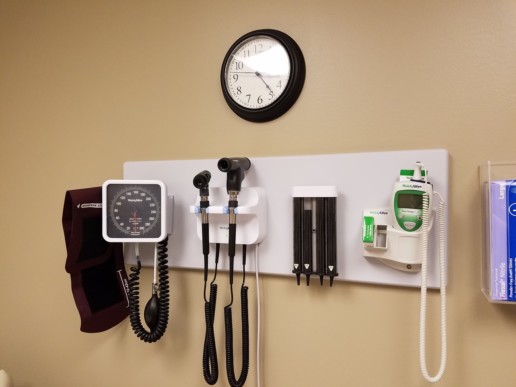Employers Consider Child Care Subsidies
Working parents have been put into situations that are causing them to almost choose between their careers and their children due to the coronavirus pandemic bringing families home and requiring work to be done virtually. Employers are now seeking ways to help employees with taking care of their children. Read this blog post to learn more.
Working parents have borne the brunt of the pandemic's impact on employees, as many must juggle their job responsibilities with overseeing their children's remote educations and overall well-being while quarantined. Some have had no choice but to quit their jobs or decided not to seek new employment when their jobs were eliminated due to the downturn, so that they could focus on caring for their kids.
In fact, an August survey by Care@Work of 1,000 working parents with children under the age of 15 showed that 73 percent were considering making major changes at work, such as revising their schedules (44 percent), looking for a different job (21 percent) or leaving the workforce entirely (15 percent).
One approach that is gaining steam among employers seeking to help employees with children is to provide child care subsidies. These typically are employer-provided spending accounts or bonuses designed to help cover the costs, in full or partially, of day care and pandemic-related educational expenses.
"Subsidizing professional child care arrangements for an organization's employees makes sound business sense because it potentially reduces the stress and anxiety that working parents might regularly experience while worrying about their children during their normal work hours," said Timothy Wiedman, a retired associate professor of management and human resources at Doane University in Crete, Neb. "And that stress and anxiety might well divert a parent's full attention from their assigned duties."
Making Sure It's Fair
To be sure, many companies have not considered offering any type of child care subsidy to working parents. A major reason often cited is that single employees, as well as those who are married without children or who have grown children, will feel slighted by an employer that offers a benefit they can't access.
"There is always that fairness doctrine that comes into play when you offer a subsidy to one employee because they have a special need that some other employee may not have or need," said Carol Kardas, SHRM-SCP, founding partner at KardasLarson, an HR consulting firm in Glastonbury, Conn. "Some may consider this a discriminatory practice, and [it] could be a cause for lower morale or productivity."
Some organizations overcome that issue by providing a different benefit instead to offset those perceptions. Wiedman suggested reviewing benefit allotments for such employer-paid offerings as elder care, the deductible required by the company-provided health care plan, the annual contribution to 401(k) retirement plans, health savings accounts, life insurance coverage (or additional disability insurance) and tuition reimbursement. The allotments can vary based on whether the employee also receives a child care subsidy.
Another option is to explain that by providing assistance to their colleagues, the workload will remain balanced and not fall more heavily on employees who don't have child care duties.
"Working parents who have to use paid time off to spend time with their children when no other arrangements can be made may also call out at the last minute, since arrangements can be canceled abruptly," Kardas said.
Alleviating Stress and Costs
Working parents who can't afford child care and don't receive a subsidy "are often interrupted by children wanting to share their toys or get a hug from dad," said Laura Handrick, an HR consultant in Phoenix. "I see the stress on parents' faces in Zoom meetings. It's too much to manage a full-time paid job and a full-time unpaid job [parenting] at the same time. The stress affects the worker's mental health, employee productivity and family relationships."
Offering child care subsidies can increase employee satisfaction and engagement, she said. "[Managers] earn employee loyalty and increased productivity from grateful employees who aren't ridiculously stressed by constant kid interruptions while working," Handrick said.
There is a financial benefit as well: Employers that supply child care subsidies can take advantage of an annual tax credit of up to $150,000 if they use it for qualified child care facilities and services. According to the IRS, "the credit is 25 percent of the qualified child-care facility expenditures, plus 10 percent of the qualified child-care resource and referral expenditures paid or incurred during the tax year." To receive the tax credit, employers must complete Form 8882.
Handrick said a company can start a child care subsidy program with flexible spending accounts (FSAs).
"The benefit of providing a child care subsidy to employees in the form of an FSA is that the employer contributes pretax dollars, reducing its payroll taxes," she said. "The employee can choose how much or how little to contribute. Those who prefer to send their children to a more expensive program can fund and pay for it through the FSA using pretax dollars."
Kardas said if workplaces hire essential workers, they could utilize government-run programs in their states, such as Connecticut's CTCARES for Child Care Program for first responders, grocery workers, state facility employees, and child care and group home workers. They could also tap into an employee assistance program (EAP) to help employees find or pay for child care, she said.
Another idea is to grant every employee a certain amount of personal time that can be used in special circumstances, such as when child care is closed or a child is sick or unable to attend a child care program on a given day.
"This type of personal time could also be given to and used by those who do not have children for attending appointments or other obligations that can't be done after work," Kardas said. "This time may not solve the issue of employees being absent, but the fact that all would share equally may help."
As workplaces reopen physical locations, HR can look for child care facilities in the immediate area and work with them to offer a discount to employees, Kardas recommended.
"Single moms and working parents rarely have an extra room at home to carve out a home office," Handrick said. "That means they're likely working from the kitchen or dining room with children at home demanding attention. Toddlers want to play, [and] school-age kids need help with online classes."
Larger employers and those with deeper resources may even consider establishing an onsite child care facility for employees and charging less than a typical child care facility, which experts agree would dramatically boost appreciation among working parents who could then visit their children during each workday.
SOURCE: Lobell, K. (22 September 2020) "Employers Consider Child Care Subsidies" (Web Blog Post). Retrieved from https://www.shrm.org/resourcesandtools/hr-topics/employee-relations/pages/many-workplaces-consider-child-care-subsidies.aspx
5 ways HR can help millennials be smarter than their parents about retirement
Getting younger employees to save for retirement is right up there with getting a finicky child to eat their vegetables. Sure, it's good for them, but it's not always what they want.
Participation rates and average deferral rates in voluntary enrollment plans for workers younger than 35 are well below those of other age groups, indicating that HR teams may need to take extra steps to reach this segment of their employee base, according to data from Vanguard, a leading 401(k) provider.
HR professionals are uniquely positioned to best assist younger workers. The best tack for HR experts to take with millennials in regard to retirement saving is to point out some of the mistakes their parents' generation has made in that area.
Help employees understand the destination
When it comes to saving for retirement, a lot of older workers are clearly lost. Younger workers have an opportunity to do a better job of staying on track.
Vanguard’s data show the average 401(k) participant within 10 years of retirement age (i.e., between ages 55 and 64) has a plan balance of just $69,097.
That may not provide much help over a retirement of 10 or 20 years.
Caution young staff members that one reason older workers are so badly behind in retirement saving is that they haven't checked first to see where they're going.
A MoneyRates retirement plan survey finds that 71% of workers within 20 years of retirement age still have not done a calculation of how well their savings will hold up over their retirement years.
Encourage your workforce to determine what enough savings is. Inform your staff that it only takes a few minutes to use a retirement calculator to see how much to put aside to meet savings goals. That way, your employees will know where their retirement plan is heading.
Educate employees on how to get debt under control
Saving for retirement is undermined when employees are also building up debt at the same time.
Stress that debt costs more than retirement investments are likely to earn, a dollar in debt can more than counteract the benefit of a dollar in savings.
According to the Federal Reserve's Survey of Consumer Finances, the typical household still has $69,000 in debt by the time the head of that household is within 10 years of retirement.
Notice that this figure almost exactly matches the previously-mentioned amount that the average 401(k) participant in that age group has. In other words, debt can effectively wipe out a person's 401(k) savings.
So, your team’s first step toward educating workers about building a more secure retirement should be to do something many in their parents' generation failed to do: get debt under control.
Teach employees how to spread savings to make the burden lighter
Retirement saving is a big job, but younger workers have something very important on their side: time. Emphasize that spreading retirement savings out over 25 to 40 years makes the job much easier.
It gets tougher if young workers do what many of their parents' generation have done--wait and then try to catch up in the last ten years or so until retirement.
The golden rule: Don't leave free money on the table
When employers provide a 401(k) match, all staff should understand there's a direct financial incentive to start saving now. Every time employees put money into their 401(k) plan, the employer kicks in some on their behalf.
If employees don't contribute money into the plan, they don't get this money from the employer. There's no going back in future years and reclaiming that extra money the employer would have put in on the worker’s behalf.
The only way not to miss out on this free money is to contribute each and every year— and to contribute enough to get the maximum employer match available.
Show employees the benefits of saving
A dollar saved today can equal $10 at retirement age.
Saving money is hard work, but HR professionals can show their employees that it gets easier when they let their investments do the work for them.
The investment returns earned become much more powerful when compounded over a long period of time. Compounding means earning a return not just on the original money invested, but also on the returns earned in other years.
Younger workers must recognize that a dollar invested today could be worth much more than a dollar invested toward the end of their career.
There are many people of older generations who would be a lot better off today if they absorbed each of these five lessons when they were younger.
SOURCE: Barrington, R. (14 October 2020) "5 ways HR can help millennials be smarter than their parents about retirement" (Web Blog Post). Retrieved from https://www.employeebenefitadviser.com/opinion/ways-hr-can-help-millennials-be-smarter-than-their-parents-about-retirement
New financial benefits give small business employees early wage access
Mandatory quarantines and business closures during the coronavirus pandemic have taken a particularly large financial toll on small businesses, forcing many employers to reduce wages and health coverage.
Sixty-five percent of small businesses said they were either extremely concerned or very concerned about how the coronavirus will affect their business, according to a survey by Freshbooks. In addition to financial pressure, small business employers are also tasked with providing benefits that will support struggling employees.
“COVID-19 just exacerbated what was going on in the market and put even more pressure on small companies and their employees,” says Emily Ritter, head of product marketing at Gusto, a payroll and employee benefits platform for small businesses. “Employees across America are living paycheck-to-paycheck and the stress of that can be expensive for households.”
Gusto has launched a new set of health and financial wellness benefits to provide employees with early access to earned wages, medical bill reimbursement and a savings account.
These financial tools are especially beneficial as healthcare costs drive many employees into debt, Ritter says. According to a Salary Finance survey, 32% of American workers have medical debt, and 28% of those who have an outstanding balance owe $10,000 or more on their bills.
“Financial health and health coverage is so inextricably linked, which has come into the limelight with COVID-19,” Ritter says. “We're seeing that small group health insurance is something that is really important, so if we can help small businesses help their employees with health bills, that's another component of financial health.”
Gusto’s new benefit offering allows employers to contribute to employees’ monthly health insurance costs. Contributions can vary from $100 to amounts that would cover an employee’s entire premium. The contributions are payroll-tax-free for the business and income-tax-free for employees, and employers also have the flexibility to adjust their contribution at any time.
“A large portion of American workers say that they wouldn't be able to handle the financial implications of a large injury or illness, and of course illness is top of mind in the midst of a global pandemic,” Ritter says. “So it was really important for us to show up with these solutions.”
Additionally, Gusto has launched Gusto Cashout, which gives workers early access to earned wages without any fees, helping them avoid having to turn to payday loans, overdraft fees or credit card debt between paychecks. With a new debit card function and cash accounts — which also provide interest — workers can put aside savings straight from their paychecks, helping them better navigate short-term emergencies and unexpected expenses.
Even before coronavirus, less than half of adults living in the U.S. had enough savings to pay for a $1,000 emergency expense, according to a Bankrate.com study, and 50% of employees said they live paycheck to paycheck, a CareerBuilder survey found.
“We're really trying to help people be prepared in those rainy day moments and avoid the debt cycle that happens,” Ritter says. “Because this product is free [for our clients’ employees] and the wages come out of their paycheck on payday, there is no continuous debt cycle that happens with a payday loan.”
Fifty-one percent of Americans feel at least somewhat anxious about their financial situation following the coronavirus outbreak, according to a recent survey from NextAdvisor, and nearly three in 10 Americans’ financial situation (29%) has been negatively impacted since the pandemic began.
Providing employees with financial wellness resources and other support can help small business owners build a more efficient and competitive business, despite the challenges faced during COVID, Ritter says.
“It's a win win for their employees and for their business,” Ritter says. “When employees are more financially stable, they're able to show up more effectively at work.”
SOURCE: Nedlund, E. (13 October 2020) "New financial benefits give small business employees early wage access"(Web Blog Post). Retrieved from https://www.employeebenefitadviser.com/news/new-financial-benefits-give-small-business-employees-early-wage-access
Steer Clear of Misconceptions About FFCRA Tax Credits
As employers learn about the paid-leave requirements under the Families First Coronavirus Response Act (FFCRA) and corresponding tax credits, misconceptions have arisen related to such details as when to claim the credits and which employers are eligible to claim them.
The FFCRA requires employers with fewer than 500 employees to provide up to 80 hours of emergency paid sick leave and up to 12 weeks—10 of which are paid—of Emergency Family and Medical Leave Expansion Act time off to employees who can't work for specific reasons relating to the COVID-19 pandemic. "Under the FFCRA, the federal government will reimburse employers for the cost of this leave by way of refundable tax credits," said Jim Paretti, an attorney with Littler's Workplace Policy Institute in Washington, D.C.
Eligible employers can claim refundable tax credits under the FFCRA for all or part of the cost of providing qualified paid-sick or family leave taken from April 1 through Dec. 31, noted Dasha Brockmeyer, an attorney with Saul Ewing Arnstein & Lehr in Pittsburgh.
When to File
Some employers believe they must wait until the end of the quarter or end of the year to claim the credits, said Asel Lindsey, an attorney with Dykema in San Antonio.
Eligible employers claim the FFCRA tax credit by retaining payroll taxes—federal income taxes and Social Security and Medicare taxes—that would otherwise be deposited with the IRS, she said. If the retained payroll taxes are insufficient to cover the full amount of the tax credit, employers can file a request with the IRS on Form 7200 for an accelerated payment. Form 7200 can be filed before the end of the month following the calendar quarter in which the qualified sick- or family-leave payments were made.
Nonetheless, the form may not be filed later than the date on which the employer files the Form 941 for the fourth quarter of 2020, which generally is due Jan. 31, 2021, she said.
"If an eligible employer receives tax credits for qualified leave wages, those wages will not be eligible as payroll costs for purposes of receiving loan forgiveness under the CARES [Coronavirus Aid, Relief, and Economic Security] Act," said Carrie Hoffman, an attorney with Foley & Lardner in Dallas.
Additional common misconceptions concern the eligibility for or availability of the FFCRA paid-leave tax credits, according to Robert Delgado, KPMG's principal-in-charge of tax compensation and benefits in San Diego, and Katherine Breaks, KPMG's tax principal in Washington, D.C. They include these incorrect assumptions:
- The group aggregation rules for determining whether an employer is eligible for the paid-leave tax credits under the FFCRA are the same for determining employer eligibility for other COVID-19-related relief, such as the employee retention credit under the CARES Act. While some employers assume that the group aggregation rules used to determine eligibility for the paid-leave tax credits are driven by tax rules, they actually are defined by the labor rules and outlined in U.S. Department of Labor guidance, as the tax credit is secondary to the requirement to provide paid leave. Under these rules, a corporation is typically considered to be a single employer but must be aggregated with another corporation if considered joint employers under the Fair Labor Standards Act rules with respect to certain employees or if they meet the integrated employer test under the Family and Medical Leave Act (FMLA).
- Employers must choose between claiming tax credits for paid leave under the FFCRA or for wages paid to employees under the employee retention credit, but they may not claim both. In fact, eligible employers may receive tax credits available under the FFCRA for required paid leave, as well as the employee retention credit, but not for the same wage payments. Similarly, employers can provide both qualified sick-leave wages and qualified family-leave wages and claim a tax credit for both, but not for the same hours. Employers may not receive a double benefit by claiming a tax credit under Section 45S taking into account the same qualified leave wages.
Other Myths
Delgado and Breaks stated that other misconceptions include the following:
- The tax credit is limited to the qualified wages an employer must pay to an employee under the FFCRA for emergency paid sick leave and expanded FMLA. In fact, the tax credit is generally equal to 100 percent of the qualified wages an employer must pay under the FFCRA for emergency paid sick leave and expanded FMLA increased by the employer's share of Medicare owed on the wages, as well as any qualified health plan expenses.
- An employer may not receive tax credits for FFCRA-required paid leave if it receives a Small Business Administration Paycheck Protection Program loan. Actually, an employer may receive tax credits for paid leave under the FFCRA, as well as a Small Business Administration Paycheck Protection Program loan, but the qualified wages are not eligible as payroll costs for the purposes of loan forgiveness.
- Employers can exclude the amount of the paid-leave tax credit from gross income. In fact, employers must include the full amount of the credits in gross income—that is, qualified leave wages plus any allocable qualified health plan expenses and the employer's share of the Medicare tax on the qualified leave wages. But employers may deduct the amount paid for emergency paid sick leave and expanded FMLA as an ordinary and necessary business expense in the taxable year paid or incurred, including wages for which they expect to take a tax credit.
"If an employer fails to claim a paid-leave tax credit on their Form 941 for the applicable quarter in which the leave wages are paid, the employer can submit a Form 941-X to reflect the corrections, including eligibility for the credit," Delgado and Breaks also noted.
SOURCE: Smith, A. (13 November 2020) "Steer Clear of Misconceptions About FFCRA Tax Credits" (Web Blog Post). Retrieved from https://www.shrm.org/resourcesandtools/legal-and-compliance/employment-law/pages/coronavirus-misconceptions-ffcra-tax-credits.aspx
How benefit advisers can hold healthcare plans accountable for their prices
Brokers and consultants already know that much of the growth in health benefit costs is not driven by insurer and TPA rate increases, but rather by the increase in the price and volume of healthcare services. While some of these costs are due to growing survivability rates for serious diseases and therapeutic improvements, much are avoidable, such as expenses associated with unnecessary care and unnecessarily expensive care. Evidence of variability of costs is found in the fact that unit cost and utilization can vary wildly from health system to health system, even within the same market.
Read more: 4 drivers of healthcare costs — and what advisers should do
Just because macro healthcare economics is the primary driver of overall health costs, doesn’t mean that health plans are powerless to control price increases. Even though health plans can and do negotiate rates directly with health systems in their networks, too often they don’t do everything they can to offer exceptional value to their customers. They don’t ask the right questions of health systems, they don’t practice thorough utilization management, and they don’t contract exclusively with providers who focus on high-value care. In other words, they don’t work hard enough to eliminate unnecessary costs or to bring prices down. Instead, they treat them as a given and pass those costs on to their customers.
Too often, benefit advisers take the whole healthcare market as a given, especially due to the popularity of broad preferred provider organization (PPO) networks, which include almost every system in an area. But the reality is that economics vary dramatically from system to system, so employee benefit advisors need to understand local economics in order to effectively evaluate network differences and find value. They can do this by:
- Heavily and skeptically questioning carriers and TPAs to understand their networks and participating providers. Examples of questions to ask include: Tell me your opinion about different health systems in your network? How much do negotiated fees vary for outpatient services, professional services, etc.? Why is a specific expensive provider part of your narrow / high-performance network?
It’s also important to ask when a contract with a specific health system is up and if it will be renegotiated soon, since a new contract could include very different rates from the current one. Note that some of the time, carriers will discuss rates as a function of Medicare, but because Medicare DRG rates can vary dramatically from hospital to hospital, an adviser needs to understand Medicare base rates.
- Analyzing claims. Every adviser has plenty of these available to them, and they should be analyzing those claims to determine which providers are lower cost and which are higher cost. In particular, it’s important to look at outpatient rates, facility rates, and professional rates, by specialty. It’s also important to compare the same diagnosis codes across providers. For example, claims could reveal that a hypothetical Dr. Jones operates on 100 patients out of 100, while a hypothetical Dr. Smith operates on only 50 patients out of 100 with the same condition. To figure out why this discrepancy exists, we would have to dig deeper since some doctors or practices may cater to only high-risk patients. Claim data can help shed light on health plan information that is not typically available to the public as health plan rates are often proprietary but appear on claims.
Taking all of these steps will help benefit advisers achieve something essential: holding health plans accountable for their prices. If a health plan doesn’t aggressively hunt for high value providers and reward them, you should ask why. And if you don’t like their answer, you probably identified a plan that isn’t a good fit for your clients because it doesn’t deliver on what matters most: quality care offered at an affordable price without compromising coverage.
SOURCE: Cohen, A. (04 November 2020) "How benefit advisers can hold healthcare plans accountable for their prices" (Web Blog Post). Retrieved from https://www.employeebenefitadviser.com/opinion/how-benefit-advisers-can-hold-healthcare-plans-accountable-for-their-prices
4 key reasons employers must offer financial security benefits
During the continuous trials of the coronavirus pandemic, it's important for employers to contribute to their employee's financial wellness. Read this blog post to learn more.
A financial security benefit that helps employees pay for and manage their out of pocket healthcare expenses allows an employer to keep healthcare costs down, while providing a much-needed benefit to their employees, one that pays dividends for years to come.
With the uncertainty of the ongoing coronavirus pandemic, it is more vital than ever that employers contribute to employees’ overall financial wellness.
There are four key reasons why employers need to provide a financial security benefit to their employees.
First, restore the "benefit" in your health benefit offerings. The standard employer-sponsored health plan comes with nearly an $8,000 out-of-pocket expense.
Considering that the vast majority of Americans live paycheck-to-paycheck and 40% struggle to cover a $400 emergency expense, it’s no wonder why so many individuals consider themselves functionally uninsured despite being covered by an employer’s health plan. When an employer’s price tag to purchase that insurance for a family now exceeds $20,000 a year, it is painful for employers to witness their employee benefit suddenly become an employee liability.
Providing employees with guaranteed access to credit for medical expenses on consumer-friendly terms that they may not have access to on their own is of tremendous benefit. A benefit like this gives employees something their health plan alone can’t – financial security.
Second, remove the barriers to care. More than ever, employees with high deductible health plans are skipping care, which has costly consequences. Employees who skip care stay sick for a longer period of time and as a result, employers lose worker productivity. When outcomes erode and care is delayed, employers will see an increase in health plan expenses. By providing a financial security benefit from the start, employees can seek care with confidence, and prevent this unhealthy ripple effect from happening.
Third, increase participation in Health Savings Accounts. HSAs are great additions to an employer’s benefit line-up. In some cases, they are also the only plan design that an employer can afford to offer. Employees who are presented the choice of an HSA often bemoan that while the program should work well for them, and that the price-tag for the premium is right, the specter of a one-time deductible exposure makes them hesitant to enroll.
While lower premiums paired with some employer HSA contributions can often cover that exposure, employees worry about the timing of these expenses, particularly if they arrive early in the plan year. Providing an affordable way for employees to pay for their healthcare expenses whenever they are incurred, removes a major barrier to HSA plan election. Further, adding a financial security benefit is much more cost effective for the employer than front-loading the HSA with hard dollars at the beginning of the plan year.
Finally, they are great recruitment and retention tools. According to a recent Gallup poll, the availability and affordability of healthcare tops the list of concerns in America. As employers grapple with objectives, such as attracting, and retaining talent and balancing costs, a financial security benefit not only addresses a major employee concern, but also can help organizations differentiate themselves from their competitors.
With COVID-19 changing the landscape of healthcare and open enrollment around the corner, employers need to rethink their benefit strategy while keeping costs down. Attracting and retaining employees remains a high priority for employers and providing a financial security benefit will not only attract top talent but will also save on an employer’s overall bottom line.
SOURCE: Chambers, O'Meara A. (03 November 2020) "4 key reasons employers must offer financial security benefits" (Web Blog Post). Retrieved from https://www.employeebenefitadviser.com/opinion/4-key-reasons-employers-must-offer-financial-security-benefits
How to bridge the health insurance knowledge gap for younger employees
More often times than not, when younger employees are searching for their own health insurance plans, they make common and costly mistakes due to the lack of education in regards to health care plans. Proper education could help the young generation of employees for their health, wellness, and future. Read this blog post to learn more.
With the passage of the Affordable Care Act, young adults were able to stay on their parents health insurance plans until the age of 26. But once they get their own health insurance, many young employees make common and costly mistakes because they don’t have the proper education when choosing their own programs.
This information gap could result in employees being hesitant to seek care, resulting in higher medical expenses for employees and reduced productivity from sick leave.
“It’s a challenge— there’s a fair number of employees that will come off of their parent's insurance at the age of 26,” says Amanda Baethke, director of corporate development at Aeroflow Healthcare. “There's not a lesson that you go through in order to understand insurance.”
Employers can help bridge this gap through proper training and communication strategies. In a recent interview, Baethke shared her thoughts on how employers can provide this extra education and what they can gain from it.
How can employers help younger workers avoid health insurance mistakes?
It's beneficial for HR to do a training where they're going over what co-pays, premiums, deductibles and coinsurance are. When signing up for insurance, employees are trying to decide which insurance to pick and may not understand the full impact of that decision. Employees could pick the cheapest one because they want less out of their paycheck. There's just not a lot of discussions happening and employees are left blind.
What mistakes do young workers make when it comes to health insurance?
I’ll get a lot of questions from my team like ‘What’s an HSA and what’s the benefit?’ It's truly a lack of understanding, because nobody teaches it. A lot of mistakes will happen with out-of-network providers. They don't realize that there are insurance networks and then within those networks, there are more narrow networks underneath.
For example, an employee can call a doctor's office and ask if that office is in-network and the receptionist may respond that they are — especially for the national brands like UHC, Aetna, Cigna, Humana. However, many of those plans have narrow networks under them that allow them to better control cost. So the employee would want to ensure their particular group/plan is in-network.
Another thing is making sure employees know that even though they have a deductible, some preventative care is likely covered under their insurance. This will help them choose the right physician so if they do get sick later on, they can see that physician, rather than going to a hospital which would be more costly for them.
What specific role should HR take when it comes to educating younger employees about health insurance?
HR is responsible for making sure that employees understand the benefits that they're offering. HR works incredibly hard to deliver the best benefits possible and advocate for each and every employee. So why not just go the extra step and have a consultation with the insurance company to explain what the benefits mean, what is covered, what may not be covered, how to really navigate through the insurance company and work back with them.
SOURCE: Schiavo, A. (19 October 2020) "How to bridge the health insurance knowledge gap for younger employees" (Web Blog Post). Retrieved from https://www.employeebenefitadviser.com/news/how-to-bridge-the-health-insurance-knowledge-gap-for-younger-employees
Here's your employee checklist for open enrollment
The COVID-19 pandemic has focused consumer attention on health care, germs and the impact a single illness can have on their lives, livelihoods and loved ones. With the fall open enrollment season almost here, you have the opportunity to think more critically about the specific plans you choose for yourself and your family, as well as any voluntary benefits that may be available to you, including childcare, elder care and critical illness. In a world where it feels like health is out of the individual’s control, we all want, at the very least, to feel control over our coverage.
As we know all too well, there’s a lot to consider when it comes to choosing and using health care benefits. The most important piece of becoming an informed health care consumer is ensuring you have access to — and understand — the benefits information you need to make smart health care choices.
While open enrollment may seem daunting, devoting an hour or two to reviewing your plan options, the programs available to support you and your family physically, mentally and financially, and how to get the most from the coverages you do elect, can go a long way towards providing peace of mind as we face the unknowns of 2021. Here are five tips to keep in mind as you prepare for and participate in open enrollment.
Don’t forget that preventive care is covered by most plans at 100% in-network regardless of where that care is received. Schedule your appointments as soon as possible (and permissible in their area), and research other venues for receiving care, such as pharmacies, retail clinics and urgent care facilities. Most are equipped to provide standard vaccinations and/or routine physicals.
Unfortunately, there are also the long-term implications of COVID-19 to consider. Research suggests that there are serious health impacts that emerge in survivors of COVID-19, such as the onset of diabetes and liver, heart and lung problems. And many who were able to ride out the virus at home are finding it’s taking months, not weeks, to fully recover. As a result, you should prepre for the possibility that you, or a loved one, may be ill and possibly out of work for an extended period of time. Be sure to evaluate all of the plans and programs your employer offers to ensure your family has the financial protections you need. For some, a richer health plan with a lower deductible, voluntary plans such as critical illness or hospital indemnity insurance, and buy-up life and disability insurance may be worth investigating for the first time.
As hospitals reopen, it may be difficult to schedule a procedure due to scheduling requirements and pent up demand. A second opinion may be in order if your condition stabilized, improved or worsened during the delay; there may be other treatment options available.
A delay in scheduling also provides an opportunity to “shop around” for a facility that will provide needed care at an appropriate price — especially if you are choosing to go out-of-network or have a plan without a network. Researching cost is the best way to find the most affordable providers and facilities with the best quality, based on your specific needs.
Many medical plans offer second opinion and transparency services, and there are independent organizations who provide “white glove,” personalized support in these areas. Read over your enrollment materials carefully, or check your plan’s summary plan description, to see what your employer offers. If nothing is available, ask your employer to look into it, and don’t hesitate to do some research on your own. Doing so can often result in substantial cost savings, without compromising on quality of care.
Be sure to check up on your preferred health care providers — especially those you might not see regularly — to confirm they are still in business and still in network (if applicable). If you live in a rural area, you may have to travel farther to reach in-network facilities. If you’re currently covered by an HMO or EPO, you may want to evaluate whether that option still makes sense, if your preferred in-network providers are no longer available.
When was the last time you changed your medical plan? If you’ve been keeping the same coverage for years, it might be time to look at what else is available. Your employer may have introduced new plans, or you may find that a different plan makes more sense financially based on how often you need health care. Don’t forget — the cheapest plan isn’t always the one with the lowest premiums.
You may also want to consider setting aside funds in a health savings account or health care flexible spending account (if available). If your employer offers a wellness program, this might be an opportunity to start adopting better health habits to ensure you’re better equipped physically and mentally to deal with whatever lies ahead.
3 tips to boost your healthcare literacy with technology
Historically, the relationship between consumers and their health plan providers has been a distant and somewhat bumpy one. Some health plan providers get a bad rap for poor communications, leaving consumers on their own to navigate a health care system wrought with confusing language, red tape, and unpredictable costs.
The events of a global pandemic have compounded the complexity of dealing with the healthcare system. A recent J.D. Power Survey found that more than 60% of privately insured U.S. health plan members did not receive any guidance about COVID-19 from their providers. The lack of healthcare literacy — knowing what questions to ask and where to get care — has also created a bigger gap between everyday people and their providers. But the good news is technology can help us get more out of our benefits, making our relationship with health plan providers more connected.
The COVID-19 pandemic has exposed the need for more TLC and attention when it comes to benefits. But technology can help us get the most out of our benefits — strengthening our consumer relationship with health plan providers. By engaging with technology, we can improve our healthcare literacy, identify cost-saving opportunities and be more prepared for the unexpected.
If consumers are going to make an informed decision during open enrollment, they’ll need information about the number of visits they paid to the doctor and the costs of their claims to determine if they should change plans. Maybe they’re paying a lot more in premiums, or perhaps they didn’t meet their deductible. Being engaged with your benefits is key to getting the most out of them.
Tip: Avoid going on autopilot with your benefits. Benefits offerings are always changing, and health providers often offer programs that you can opt-in to free. Make sure you’re set up to receive notifications from your benefits administrators and health plan providers. Then take action. Use the preventative care offerings, likes annual wellness check-ups, and enroll in the programs that will serve you now and in the future.
During the pandemic, there has also been an increase in the use of AI to improve communication across the healthcare ecosystem. For example, patient care in the emergency room (ER) is traditionally delivered numerically — first come, first serve. However, AI can help doctors and caregivers at hospitals prioritize the needs of waiting patients. This can lead to a decrease in wait times in crowded hospitals — especially important during the pandemic. In the same vein, AI can help an individual decide if they truly need to visit the ER or if a telehealth option would be more effective and affordable.
Caregiver support platforms, like Cariloop, are using cloud-base technology to improve communication between providers, consumers and their families. This employer-sponsored benefit offers tailored caregiving plans and coaching for families looking for pediatric and senior care. Cariloop, and other caregiver support platforms, use technology to tap into a system of trusted providers and build caregiving scenarios with planning and calculator tools. Users can adjust for different scenarios, review whatresources are available, and receive personal coaching throughout the caregiving journey.
Tip: Viewing benefits as an item to check off a list once a year means you might be overpaying or leaving benefits on the table. Using claims integrations and decision support tools, like planning calculators, can help you and your family fully engage with your benefits and improve your healthcare literacy.
Benefits administrators and health plan providers are beginning to see the importance of supporting the whole person — through mental wellbeing initiatives or by offering online tutoring discounts, streaming virtual fitness programs, and food delivery services.
Tip: Look to the different options that providers use to deliver holistic and preventative care options. For example, year-long access to audio-guided meditation apps like Headspace or programs built around the use of wearable technology that rewards users who meet personalized activity goals. These initiatives go beyond regular patient care and give you tools to support your wellbeing — not just when you’re feeling under the weather.
Tackle growing healthcare costs with earned wage access
As open enrollment begins to trickle in, advisors are looking for new and improved ways to help employees to leverage out of pocket costs on the year that is upon them. For both and employers and employees, healthcare strategies are an integral part of workforce management. Read this blog post to learn more.
It’s that time of year when we all learn that health care costs are going up (again).
As the nonprofit Business Group on Health reported, the average employee will be hit with $15,500 in out-of-pocket costs next year, and the average employer will pick up about two-thirds of that tab. Even with shared responsibility, those are big hits for both employer and worker, which is why health care strategy must be integral part of workforce management.
However, benefits managers may not be aware of a tool that may help keep health care costs down for both employers and workers, and which lets employees more fully participate in the economy they helped create.
Earned Wage Access (EWA), sometimes known as on-demand pay, is a revolutionary benefit that I wrote about back in May. It comes at no cost to employers, and is available to workers at little or even no cost, depending on the provider.
Earned Wage Access allows workers to access a portion of their earned wages that they have not yet been paid on. Depending on the provider, those wages can be immediately accessed on the provider’s payroll card, or just about any debit card.
What does on-demand pay have to do with health care?
When employees receive medical services, payment is often required up front. If employees only get their paycheck every two weeks, they may not have access to liquidity to pay for those services. The result is that an employee may be forced to delay a necessary visit or procedure, and if they are suffering from an acute condition, their health may be severely compromised.
However, with immediate access to the money employees have earned, but not yet been paid on, they have access to health care in the moment. Waiting rooms are bad enough. Waiting periods for basic health care are unnecessary and harmful.
There’s another reason why on-demand pay is critical to your health care strategy. There is a stealth health care crisis brewing in America. Millions have delayed preventative and necessary care due to the COVID-19 situation.
Every delayed preventative screening, test or check-up can result in a failure to discover a serious medical condition that requires treatment. That raises treatment costs down the line for both company health plan and employee.
By wrapping earned wage access into your health care strategy, you can encourage workers to utilize preventative and maintenance care at any time — not just on payday. Doing so also eliminates a common impediment: some people just don’t like to go to the doctor. If they have the excuse not to go, they’ll use it. EWA removes that psychological obstacle.
The same goes for access to medications. High cholesterol, high blood pressure, anxiety/depression, and many other chronic conditions require regular doses of prescribed drugs. Missing even a single day of some of these medications can significantly increase risk of adverse consequences in patients.
Earned wage access allows employees to refill medications when they need to. Waiting can be deadly. Some EWA providers even offer prescription discounts with their smartphone app.
Physicians encourage timely health care for obvious reasons. Employers should encourage it as well, not only out of concern for workers, but because timely health care can result in lower health care costs. However, it’s one thing to encourage timely health care visits. It’s another to offer timely pay to workers so they can meet that request. Earned wage access creates immediate health care access.
On-demand pay usually comes at no cost to employers. Some providers are already integrated with the largest payroll services, and others are integrated with dozens of them. The cost of earned wage access varies by provider, but certain ones offer the service at no cost for employees who use the provider’s payroll card. Other services have costs that are extremely low.
Adding earned wage access to your benefit plan will benefit your overall health care strategy, and your employees.
SOURCE: Meyers, L. (05 October 2020) "Views: Tackle growing healthcare costs with earned wage access" (Web Blog Post). Retrieved from https://www.employeebenefitadviser.com/opinion/tackle-growing-healthcare-costs-with-earned-wage-access










